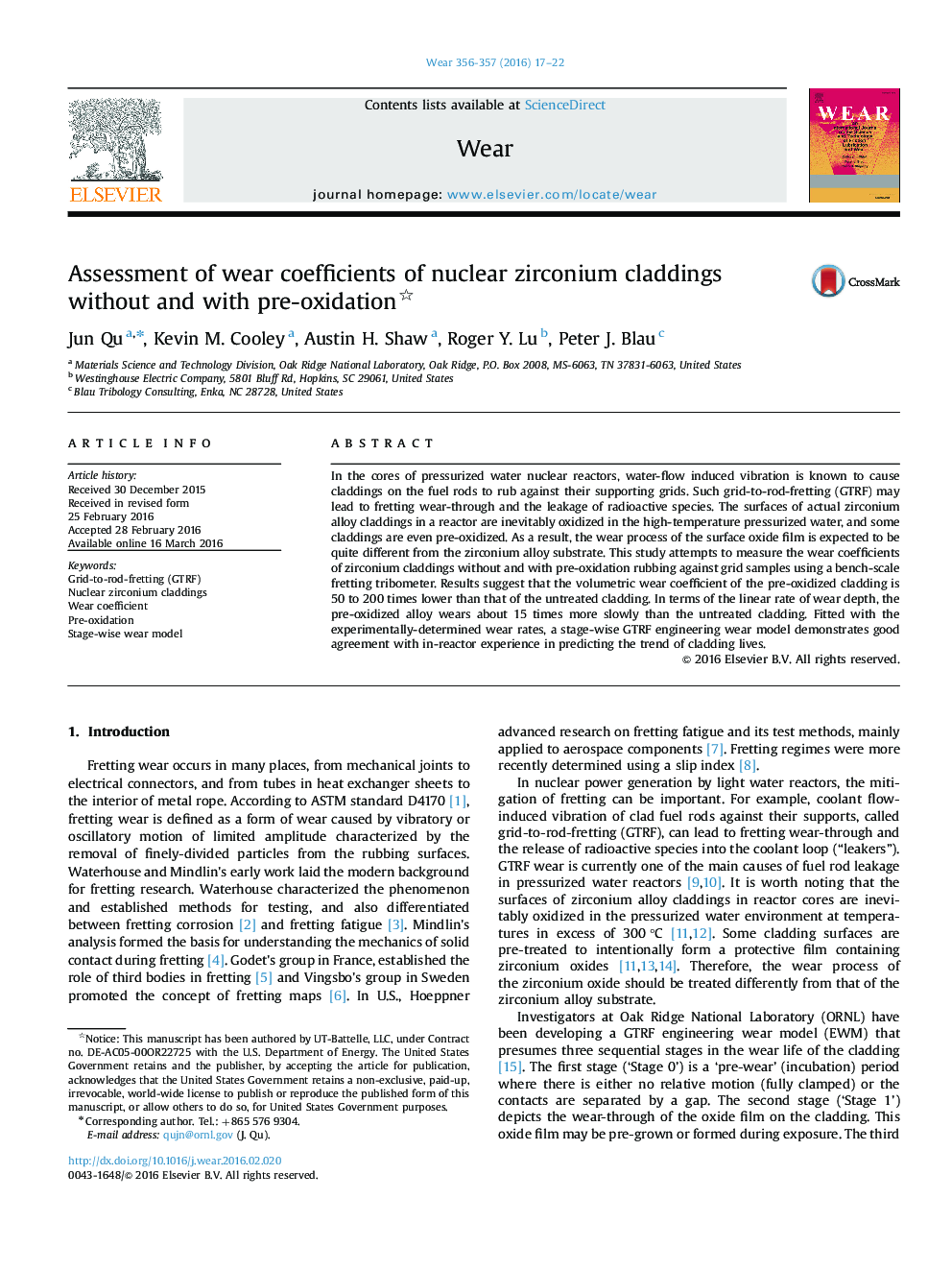| Article ID | Journal | Published Year | Pages | File Type |
|---|---|---|---|---|
| 7004104 | Wear | 2016 | 6 Pages |
Abstract
In the cores of pressurized water nuclear reactors, water-flow induced vibration is known to cause claddings on the fuel rods to rub against their supporting grids. Such grid-to-rod-fretting (GTRF) may lead to fretting wear-through and the leakage of radioactive species. The surfaces of actual zirconium alloy claddings in a reactor are inevitably oxidized in the high-temperature pressurized water, and some claddings are even pre-oxidized. As a result, the wear process of the surface oxide film is expected to be quite different from the zirconium alloy substrate. This study attempts to measure the wear coefficients of zirconium claddings without and with pre-oxidation rubbing against grid samples using a bench-scale fretting tribometer. Results suggest that the volumetric wear coefficient of the pre-oxidized cladding is 50 to 200 times lower than that of the untreated cladding. In terms of the linear rate of wear depth, the pre-oxidized alloy wears about 15 times more slowly than the untreated cladding. Fitted with the experimentally-determined wear rates, a stage-wise GTRF engineering wear model demonstrates good agreement with in-reactor experience in predicting the trend of cladding lives.
Keywords
Related Topics
Physical Sciences and Engineering
Chemical Engineering
Colloid and Surface Chemistry
Authors
Jun Qu, Kevin M. Cooley, Austin H. Shaw, Roger Y. Lu, Peter J. Blau,
